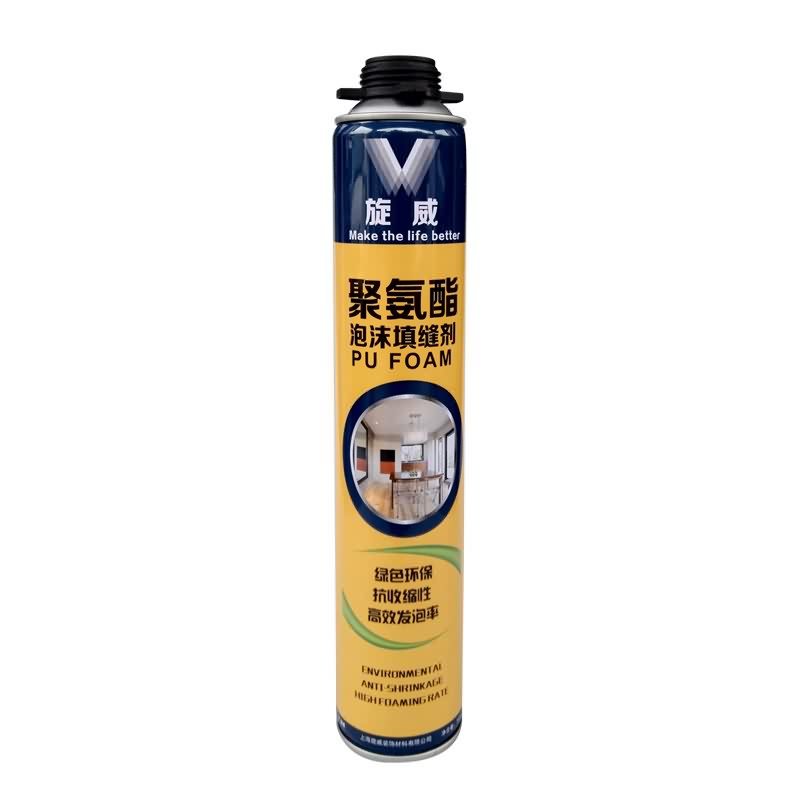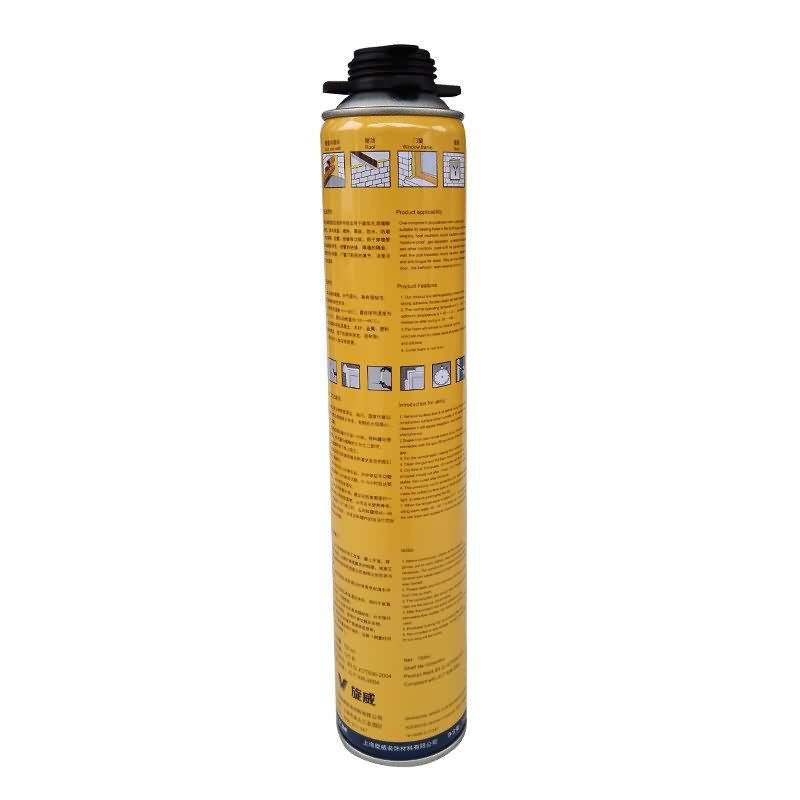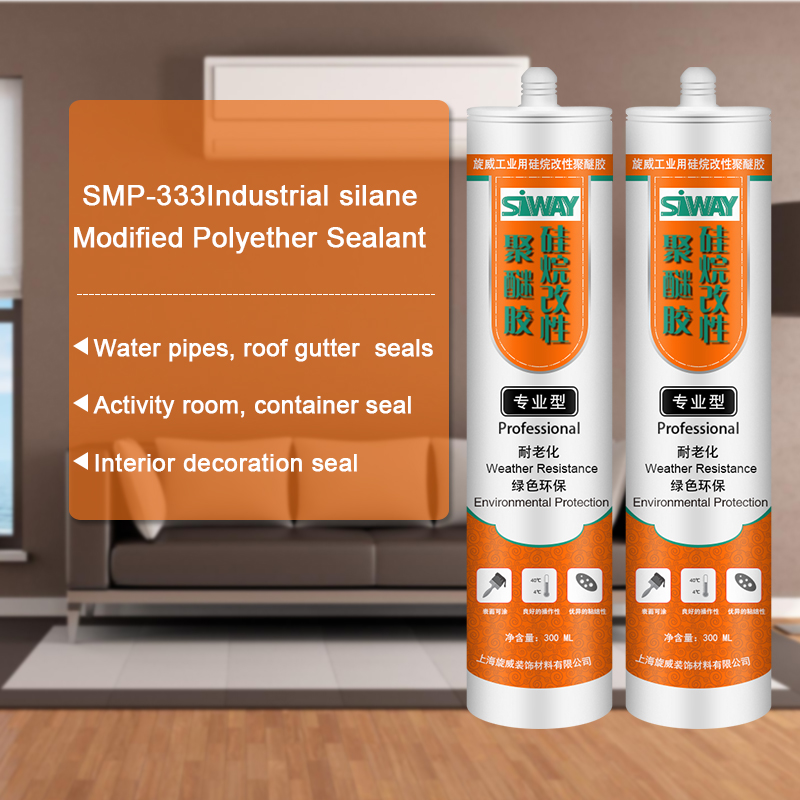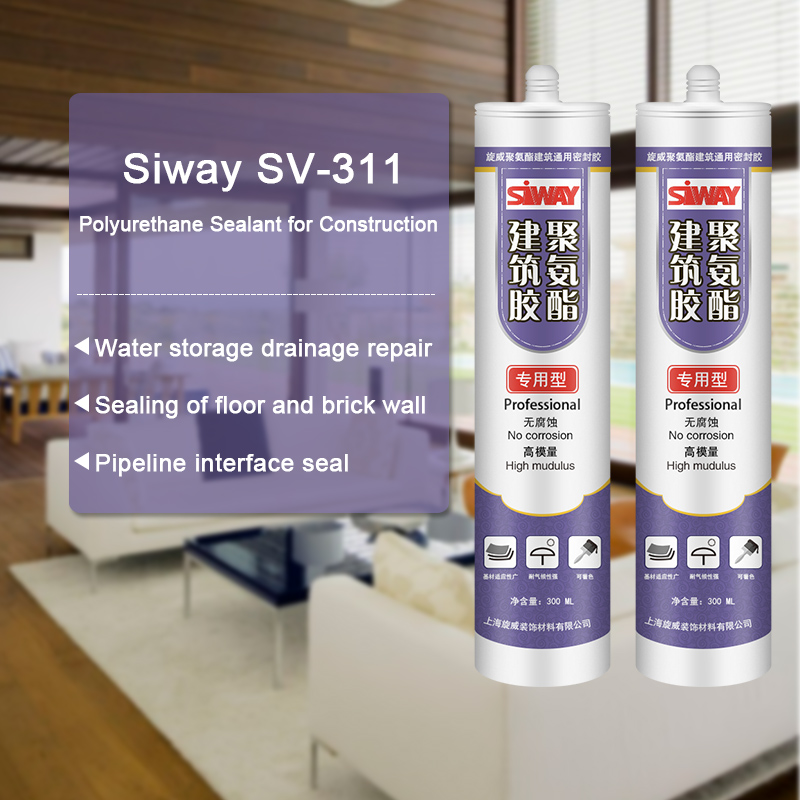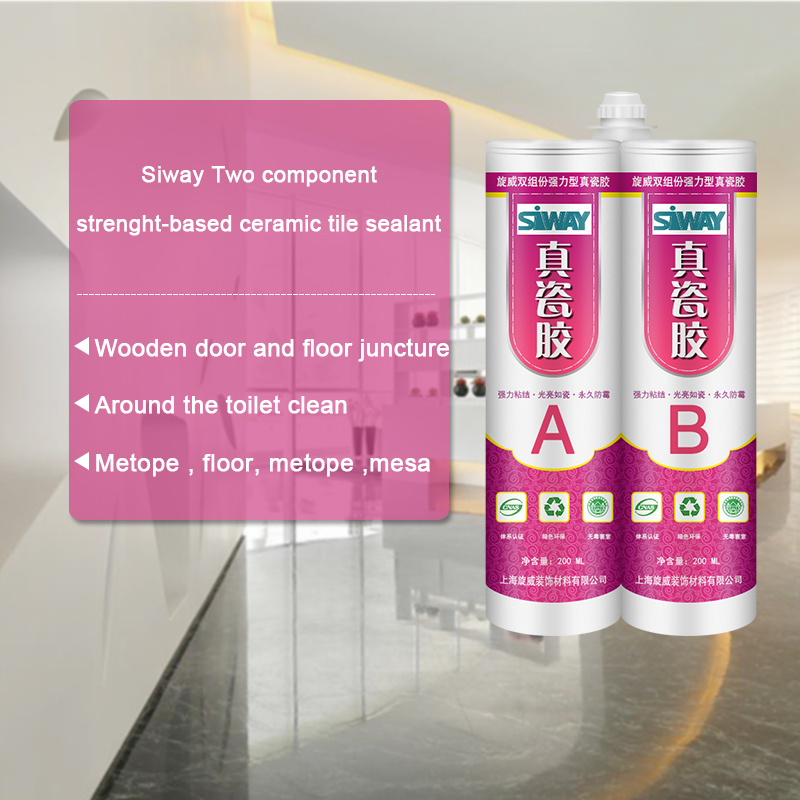Goods high definition for Siway PU FOAM Supply to Belgium
Short Description:
Description This product is the expansion, moisture curing, has the strong cohesiveness, elastic foam obturator structure; Save work to save time, reduce waste; High bond strength; Bubble can stick in the concrete, wood, metal, plastic, such as base material surface, but not including teflon, silicon resins; Key Features 1. Noise silencing effect 2. Strong bonding strength 3. Water & weatherproof 4. Primerless adhesion to most building materials Basic Application 1.Doors and Windows a...
Our products are widely recognized and trusted by users and can meet continuously changing economic and social needs for Goods high definition for Siway PU FOAM Supply to Belgium, If you are interested in our products, please feel free to send us your inquiry. We sincerely hope to establish win-win business relationships with you.
Description
This product is the expansion, moisture curing, has the strong cohesiveness, elastic foam obturator structure; Save work to save time, reduce waste; High bond strength;
Bubble can stick in the concrete, wood, metal, plastic, such as base material surface, but not including teflon, silicon resins;
Key Features
1. Noise silencing effect
2. Strong bonding strength
3. Water & weatherproof
4. Primerless adhesion to most building materials
Basic Application
1.Doors and Windows and wall body between the gap filling sealing, fixed bond
2.Language lab, studio, etc when decorating, gap to fill
Technical data sheet
|
Project |
Value |
||
|
Density, Kg/m³,Not less |
10 |
||
|
Thermal conductivity,35℃,W/(m·K) no more than |
0.050 |
||
|
Dimensional stability(23±2)℃,48,h no more than |
5 |
||
|
Operating temperature |
-10~+35℃ |
||
|
Optimum operating temperature |
+18~+25℃ |
||
|
Temperature range(After curing) |
-35~+80℃ |
||
|
Tensile bond strength kPa Not less |
Aluminum plate |
Standard condition,7d |
80 |
|
Immersion,7d |
60 |
||
|
PVC plate |
Standard condition,7d |
80 |
|
|
Immersion,7d |
60 |
||
|
Cement Plate |
Standard condition,7d |
60 |
|
|
Shear strength,kpa,Not less |
80 |
||
|
Foam expansion ratio,Not less |
Standard value-10 |
||
Certification
JC 936-2004
Color
White
Package
750ml in Bottle * 12 per box
Shelf life
12 months
Note
If you want the TDS or MSDS or other details, please contact with our sales person.
In this video, I test the strength of four different glues and adhesives. These tests aren’t exactly scientific but I wanted more of a “real world” test because I’m making UAV/quadcopter frames and you never know how you’re going to crash.
ABOUT THE TESTS
I made 4 wood frames from 1/16″ thick birch plywood. This is the same wood that I’m using to sandwich in between layers of carbon fiber in my frames. Glued to the bottom of each frame is 0.008″ thick woven carbon fiber sheet. This is very thin, lightweight stuff and all 4 pieces came from the same sheet.
The carbon fiber sheet was sanded and all surfaces were cleaned thoroughly. All adhesives were mixed and applied according to their instructions.
TEST 1 – BSI 30 Minute Slow Cure Epoxy
BSI stands for Bob Smith Industries. This epoxy is sold in many hobby stores and I seen videos where people rave about how good it is. For this application it was the worst. While it is slightly flexible after it cures, its still brittle. All I had to do was crack a corner and I easily peeled off the carbon fiber with hardly any effort. This stuff is not going to work well with a frame that’s constantly flexing and its not going to hold up at all in a crash.
TEST 2 – Loctite CA Professional
I’ve heard good things about using CA (Cyanoacrylate or “Super Glue”) on carbon fiber but you can’t trust everything you read on the internet. I used CA quite a bit on my micro quads but I was gluing wood and plastic. Here, it was a tiny bit better than the BSI epoxy, but not much. It took a little more effort to separate the carbon fiber but once it started peeling away, it was the end. Just like hard epoxy, CA is too brittle and can’t handle flexing.
TEST 3 – JB WELD Clear Weld
This 2 part epoxy is a COMPLETELY different product from the original JB Weld. This is a 5 minute epoxy that comes in a handy syringe style applicator. I’ve always heard quick drying epoxies are brittle but this stuff remains very flexible! When I tried to peel a corner, it resisted quite well, to the point where the wood started to split first. I really was struggling to peel the carbon fiber away. The carbon fiber actually ripped before I could peel the entire piece away. Remember, I was using very thin carbon fiber sheet for these tests. When I peeled the last piece off, you can see the wood itself had separated, not the bond between the carbon fiber and wood.
I would certainly recommend this product when you need to fix something in the field or you need to glue something that isn’t critical. The problem with gluing more complex things like a frame, is that it hardens too quickly.
TEST 4 – 3M EC2216 Epoxy
This stuff is pretty amazing but it has its drawbacks. First, its expensive. Its around $20 for a 1.45 oz tube. Also, it dries very slowly- 24 hours for handling strength and 7 days for full strength. All that aside, you can see how well it held up in my test. When I tried to peel a corner, it took considerable effort to do any damage and then the carbon fiber sheet ripped. I was able to tear the entire edge away while the remaining carbon fiber was still firmly attached to the wood. I tried it on the other end and the same thing happened. I ended up having to break the frame to get enough leverage to separate the wood from the carbon fiber. You can see me twisting one piece of wood all the way around and the bond still holds. This is an amazing adhesive.
NOT SHOWN IN THIS VIDEO
I had already tested 2 other glues that aren’t in this video because I didn’t want to waste more carbon fiber. I tested regular JB Weld and its too brittle. It behaved in a similar way to the BSI epoxy. I also tested Gorilla Glue. While its a great glue for foam and wood, it does not stick to carbon fiber at all.
If you’ve been following my videos, you know I’ve built a replacement frame for my QAV400 that weighs less than half of the original frame but lacks torsional stiffness. I’m currently testing several designs for a strong, light frame that has good torsional properties as well. To follow along as I build new frames, see my QAV400 mods log:
https://diydrones.com/forum/topics/qav400-mods-to-increase-flight-time
If you’re planning to build a stock QAV400, its a great quad! Here’s my original build log that uses all of the factory parts:
https://fpvlab.com/forums/showthread.php?33317-Rob215-s-QAV400-Build
Current Specs:
- DIY carbon fiber lower frame / Lumenier QAV400 upper frame
- Lumenier FX2216-9 1100KV motors
- Lumenier 30A SimonK ESCs
- APM 2.6 flight controller with uBlox GPS/compass kit
- 3D Robotics telemetry radio
- FrSky X8R 2.4GHz receiver
- Graupner 9×5 E-Props
- QAV Quick-mount 2-axis brushless gimbal
- GoPro Hero3 Black camera
- Lumenier CS-600 FPV camera
- Flytron TVS-2 remote camera switch
- MinimOSD
- ImmersionRC 5.8GHz 600mw Tx
- ImmersionRC Uno 5800 V2 Rx
- IBCrazy 5.8GHz Bluebeam Ultra antennas
- Lumenier 5200mAh 4S battery
Thanks for watching! Please Subscribe!! =)
Behold The Future…Hydrogel superglue is 90 percent water, New “water adhesive” is tougher than natural adhesives employed by mussels and barnacles.
Nature has developed innovative ways to solve a sticky challenge: Mussels and barnacles stubbornly glue themselves to cliff faces, ship hulls, and even the skin of whales. Likewise, tendons and cartilage stick to bone with incredible robustness, giving animals flexibility and agility.
The natural adhesive in all these cases is hydrogel — a sticky mix of water and gummy material that creates a tough and durable bond.
Now engineers at MIT have developed a method to make synthetic, sticky hydrogel that is more than 90 percent water. The hydrogel, which is a transparent, rubber-like material, can adhere to surfaces such as glass, silicon, ceramics, aluminum, and titanium with a toughness comparable to the bond between tendon and cartilage on bone.
In experiments to demonstrate its robustness, the researchers applied a small square of their hydrogel between two plates of glass, from which they then suspended a 55-pound weight. They also glued the hydrogel to a silicon wafer, which they then smashed with a hammer. While the silicon shattered, its pieces remained stuck in place.
Such durability makes the hydrogel an ideal candidate for protective coatings on underwater surfaces such as boats and submarines. As the hydrogel is biocompatible, it may also be suitable for a range of health-related applications, such as biomedical coatings for catheters and sensors implanted in the body.
“You can imagine new applications with this very robust, adhesive, yet soft material,” says Xuanhe Zhao, the Robert N. Noyce Career Development Associate Professor in MIT’s Department of Mechanical Engineering. For example, Zhao’s group is currently exploring uses for the hydrogel in soft robotics, where the material may serve as synthetic tendon and cartilage, or in flexible joints.
“It’s a pretty tough and adhesive gel that’s mostly water,” Hyunwoo Yuk, a graduate student in mechanical engineering and the lead author of a paper on the work, says. “Basically, it’s tough, bonding water.”
Zhao and his students publish their results today in the journal Nature Materials.
A stretchy anchor…
A tough, flexible hydrogel that bonds strongly requires two characteristics, Zhao found: energy dissipation and chemical anchorage. A hydrogel that dissipates energy is essentially able to stretch significantly without retaining all the energy used to stretch it. A chemically anchored hydrogel adheres to a surface by covalently bonding its polymer network to that surface.
“Chemical anchorage plus bulk dissipation leads to tough bonding,” Zhao says. “Tendons and cartilage harness these, so we’re really learning this principle from nature.”
In developing the hydrogel, Yuk mixed a solution of water with a dissipative ingredient to create a stretchy, rubbery material. He then placed the hydrogel atop various surfaces, such as aluminum, ceramic, glass, and titanium, each modified with functional silanes — molecules that created chemical links between each surface and its hydrogel.
The researchers then tested the hydrogel’s bond using a standard peeling test, in which they measured the force required to peel the hydrogel from a surface. On average, they found the hydrogel’s bond was as tough as 1,000 joules per square meter — about the same level as tendon and cartilage on bone.
Zhao group compared these results with existing hydrogels, as well as elastomers, tissue adhesives, and nanoparticle gels, and found that the new hydrogel adhesive has both higher water content and a much stronger bonding ability.
“We basically broke a world record in bonding toughness of hydrogels, and it was inspired by nature,” Yuk says.
https://news.mit.edu/2015/hydrogel-superglue-water-adhesive-1109
———————————————————————————————————–
Newly engineered water superglue (MIT Video)

